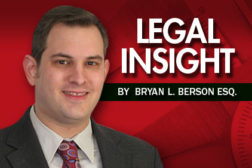Home » Keywords: » Peter Drucker
Items Tagged with 'Peter Drucker'
ARTICLES
Legal Insights: Building Conflict Competence
Improve conflict resolution and workplace mediation
December 6, 2013
Get our new eMagazine delivered to your inbox every month.
Stay in the know with Quality’s comprehensive coverage of the manufacturing and metrology industries.
SIGN UP TODAY!Copyright ©2024. All Rights Reserved BNP Media.
Design, CMS, Hosting & Web Development :: ePublishing

